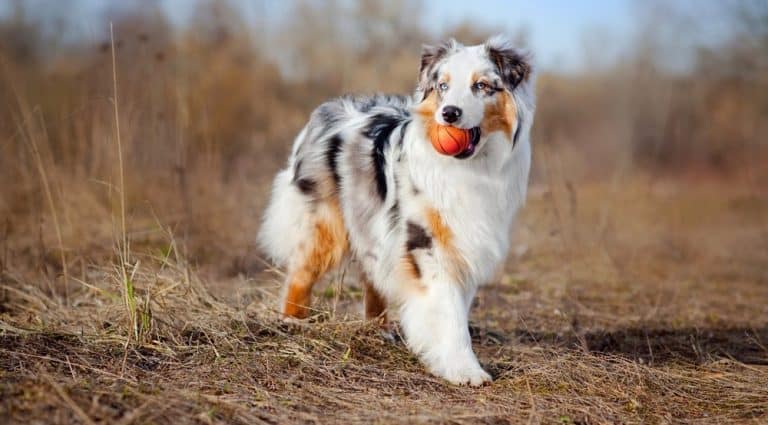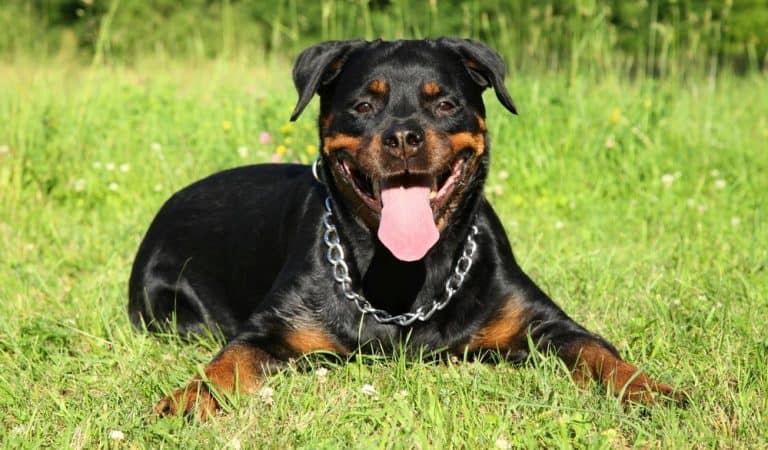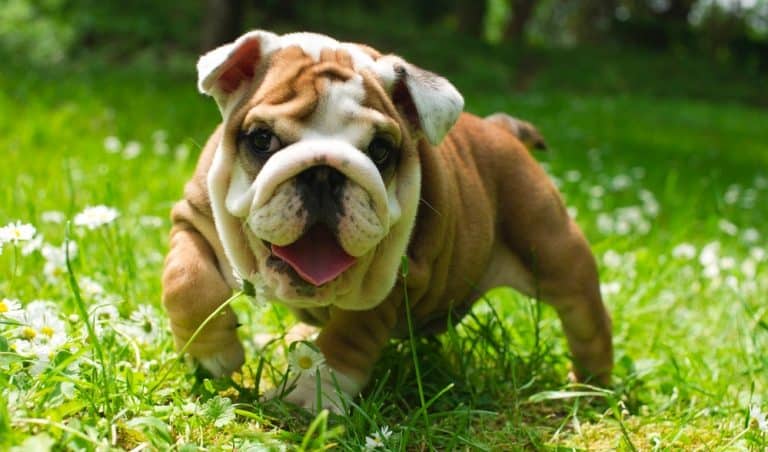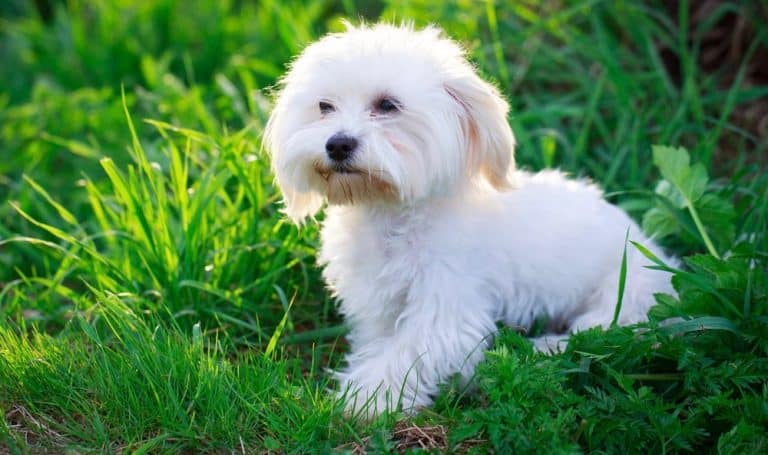Do Huskies Shed – Husky Shedding & Grooming
As the name implies the Siberian Husky hails from Siberia but is known all over the world for its striking beauty.
Their distinctive features consist of those blue or multi-colored eyes, wolf-like features, and facial masks with multi-colored coat markings.
But their looks are not their only appeal. The Siberian Husky is known to be intelligent and athletic making great companions to adults and children alike.
As dog parents, you need to remember that Siberian Huskies require ample exercise and sufficient attention to keep them from unwanted behaviors.
Huskies also have a tendency to escape the fence and get into mischief. They need a spacious yard with a high fence that goes all the way into the ground to avoid escapes. If you give your Husky enough exercise, it will minimize boredom and attempts to escape.
If you would like to own a Siberian Husky, then you may have asked the popular question. “Do huskies shed?”
We answer this question in great detail and many more about Siberian Husky shedding, grooming, and overall care.
Do Huskies Shed A Lot?

Siberian Huskies do tend to shed a lot especially based on the climate they reside. If the Siberian Husky is found in a warmer climate they usually shed more in general, but intensely about twice per year for about a 3-week period.
Huskies were born and bred for colder climates, so this is normal.
As a double-coated breed, Huskies usually shed minimally all year round with major shedding takes place with a change in the climate. For Huskies, this is called “blowing their undercoats”.
In the wintertime, Huskies naturally develop a densely thick and fluffy undercoat that insulates their bodies while the long topcoat shields them against the elements like snow, rain, and wind.
However, with this change of seasons and the rising temperatures, Huskies don’t need such a thick coat and will shed this coat leaving a lot of furs behind. As a dog owner, you should be prepared for this.
After they have shed their thick winter coats, you will see that their undercoat is much lighter, although they still have a double coat. Some huskies only blow their coats once per year, but they usually shed their summer coat during the fall.
Husky Shedding Frequency
You will notice that your husky is shedding about twice per year before the season changes. And usually happens during the Spring and fall seasons so that they can prepare for summer or winter.
A husky will shed its winter coat so that it can remain cool during the warm summer months. Likewise, they will shed their summer coats to prepare for the cold winter months ahead.
Usually, it will take 3 to 5 weeks for a Husky to completely shed its coat. Nevertheless, there are a few circumstances where this is not the case as some Huskies can shed for a longer or quicker time based on the climate.
Once your Husky sheds, you need to monitor him to make sure that there are no problems.
The Main Reasons Huskies Shed
The main reason why your husky will shed is because of the changes in seasons where they adjust based on the temperature.
Remember that since Huskies were bred for colder and harsher climates, they don’t do that well in warmer climates, which is why they usually shed.
As stated before, huskies have two layers in their coat that serve different purposes. Humans only see the top layer which protects from the elements.
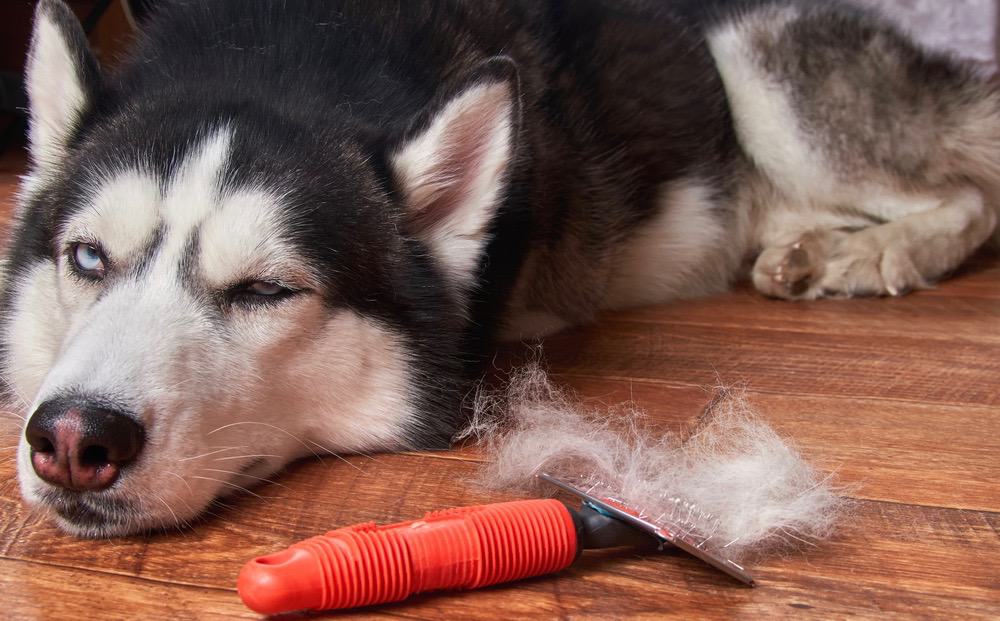
Huskies can easily live in a negative 60-degree climate if they have to. Their double-layered coats protect them in the cold months but also the warmer months.
Your Husky may not be as fluffy and thick in the summer, but this is how they tend to regulate their body temperature. Apart from seasonal changes, Huskies also shed their fur for other reasons which are as follows:
Parasites – These include fleas, lice, or mites. You may notice that your dog starts scratching himself if he has been bitten by a parasite. He might also get irritated skin, so you would need to take the dog to a vet as soon as possible to get the parasites removed.
Pregnancy or lactation – check for this, if your husky is not spayed as this has to do with the hormonal changes experienced during pregnancy.
Additionally, pregnancy is stressful and the female dogs will shed a lot more if they are pregnant. So, you don’t need to worry if you notice your dog shedding intensifies during this time, but a visit to the vet won’t hurt.
Sunburn – Huskies that have been shaved are at extra risk for this
Infection – fungal or bacterial
Food allergies – Pay attention when you change dog food
Exposure to toxic chemicals
How To Manage Your Husky Shedding
Brushing
One of the best decisions you can make is to use proper de-shedding tools like brushes, to control the shedding of your Siberian Husky.
You can keep your dog’s shedding in a controlled area if you put time aside to brush him. Because you know that he will shed his fur, it is best to do so on your terms by implementing regular brushing at a convenient location.
A Siberian Husky’s fur can be sometimes difficult to deal with because they shed a great deal. Brushing is a great way to remove your dog’s fur before he can shed it all over the place.
Brushing should be done at least 3-5 times per week as your Siberian Husky will also have healthier fur as a result, and it will give his coat a beautiful shine.
If you brush your dog regularly it will also increase your bond together as they tend to enjoy it quite a lot. He will look forward to this special time with you and his mood will be improved.
Shampoo & Bathing
Regular baths are important for every dog, but for a double-coated breed like the Siberian Husky, frequent baths are crucial dirt, loose hair, dander, fleas, and unpleasant pet smells can be managed. This regular routine is what allows you to control all the shedding.
A good anti-itch shampoo is a great idea for your Siberian Husky especially if he is shedding more than usual. It will limit the amount of hair that inevitably ends up all over your house.

Remember to give your Siberian Husky regular baths with a good shampoo to protect him from complications that come along with fleas and ticks.
But make sure the shampoo is not too harsh because it could affect the beauty of his coat. One per week should be fine.
Diet
Your Siberian Husky needs food that has high amounts of protein and other essential vitamins and minerals that can satisfy his nutritional needs.
Please stay away from cheap low-quality foods that do not offer the necessary nutrients that your dog requires. Also, note that a Siberian Husky is a breed that loves to remain active, and he would need a diet that will make him strong and healthy.
The best food for Husky is what you should be serving your dog on a daily basis because it contains high-quality ingredients. It is a good practice to give him foods that would ensure that he has healthy skin and a beautiful coat.
Healthy skin results in a healthy coat because the danders that are forming and the shedding would be at a minimum.
Supplements
It is always a good idea to give your Siberian Husky additional supplements that may not be readily available in the food that you buy.
Give him Omega supplements and fatty acid supplements because they help the skin and fur of your dog. It also reduces shedding and keeps the dander forming to a minimum.
Make sure that these Omega supplements come from wild fish because fish is proven to be very healthy for the skin and coat.
Husky Coats
The Siberian Husky comes in an enormous range of coat colors and patterns, and this is different from many dog breeds out there.
Many people hold the erroneous belief that Siberians are either Gray & White or Black & White. This is also the view that nearly all Siberians have blue eyes. All of these assumptions are very far from the truth.
According to the American Kennel Club registration form, Siberian Huskies come in at least the following colors: red, black, sable, agouti, gray, and white.
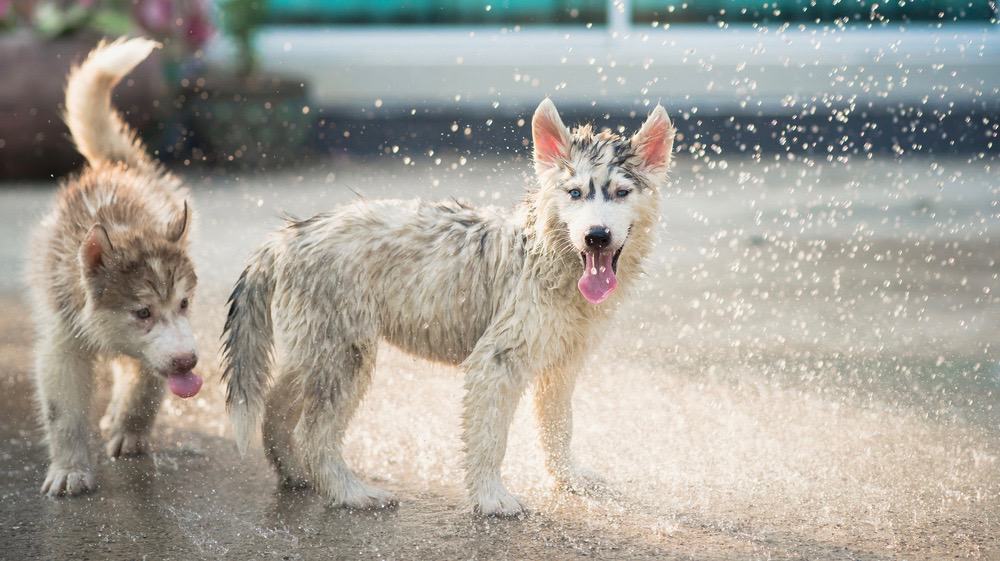
Nonetheless, these dogs are organized based on the colors outlined by the International Siberian Husky Club.
When your husky’s intense seasonal sheds occur, it will look like his undercoat is coming out at once. But the shedding is actually a result of a new topcoat growing in and pushing the fluffy underfur out.
What Is The Difference Between Shedding And Fur Loss?
Dogs tend to shed their fur at varying degrees. This is normal for all dogs and no reason for worry. As the climate changes, he will simply renew his coat. A dog that sheds is a healthy dog.
It should be expected that your Husky will shed his hair throughout the year. But they usually shed excessively when they are getting rid of their winter coats or preparing for summer. This is perfectly natural.
Conversely, out-of-season fur loss is a sign that your Siberian Husky has an underlying condition that needs to be taken care of immediately. This could be a sign of poor health and usually happens out of nowhere and with excessive fur.
The underlying conditions may be because of fungal infections, hormonal imbalance, improper diet, or reaction to harmful toxins in the environment.
Do Spayed & Neutered Huskies Shed Less
Out-of-season shedding usually occurs because of the hormonal imbalances associated with spaying and neutering procedures.
If your dog is shedding excessively, this may be because they have recently been spayed or neutered. Many dog breeds shed excessive fur after giving birth or when they have just been spayed or neutered.
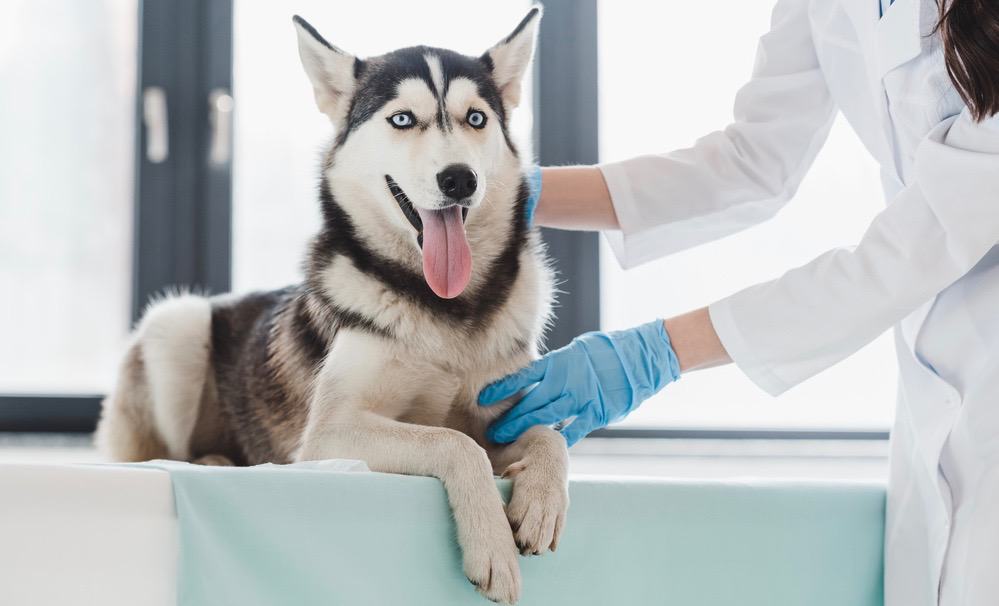
If female Huskies are nursing or pregnant, they have also been known to shed more amounts of hair than normal. If this happens you should think about feeding him greater amounts of omega-3 fatty acid to help his coat.
Also, you should also pay a visit to your vet to ensure that her health is in order.
Do Huskies Puppies Shed More Than Adult Dogs
Siberian Husky puppies only have one layer of hair until they get rid of their puppy coats. So they will begin life with just one layer of coat, even though they will eventually develop a double coat.
You should be prepared because during this de-shedding process you will see a lot of fur, and it usually takes a few weeks. You need to exercise patience. Furthermore, you need to make sure that you de-shed a dog every day throughout this period.
With a Siberian Husky, clean-up can be a hard job, especially in comparison to other dogs. Puppies have also been known to shed more fur than their adult counterparts because they are still in the process of growing.
Are Huskies Hypoallergenic
No, they are not. They also have danders, which are dead skin cells that are not good for people who have animal allergies but good for dogs to shed. The most common allergens that exist in a dog coat are Danders.
A truly hypoallergenic dog does not exist. Nevertheless, some dog breeds are easier to deal with than others. Siberian Huskies produce a fair amount of allergens especially in comparison to other dog breeds.
Hair or dog fur is only part of what triggers a person’s allergies. Allergies are actually triggered by a dog’s saliva, urine, and dander in addition to his fur.
Do Huskies Smell
Compared to other dog breeds, Siberian huskies don’t have a horribly pungent smell. However, all dogs smell and many of them have a particularly bad order.
Siberian Huskies usually develop a bad smell because of their thick coats. To mitigate this you need to give your dog regular baths so that the scent will be lessened.
Regular and proper baths, as well as regular brushing, will be a tremendous help. The brushing will ensure that the fur will not clump together and the smell will be tolerable. I
f you live in a small apartment or house and the odor will be present throughout this enclosed space, you should take even more care to do this.
Do Huskies Shed More Than German Shepherds?
There is no simple answer to this question as both dogs are notorious shedders, but tend to have slightly different shedding patterns.
German shepherds are generally the larger of the two dogs so because of this, they will have more fur to shed. A German shepherd is classed as a large dog whilst a husky is known as a medium-sized dog.
Both breeds possess double coats and an abundance of fur to protect them in colder climates. The main difference is that a husky will shed a lot in the spring and autumn, but they tend to shed less in cooler climates.
Husky Shedding FAQs
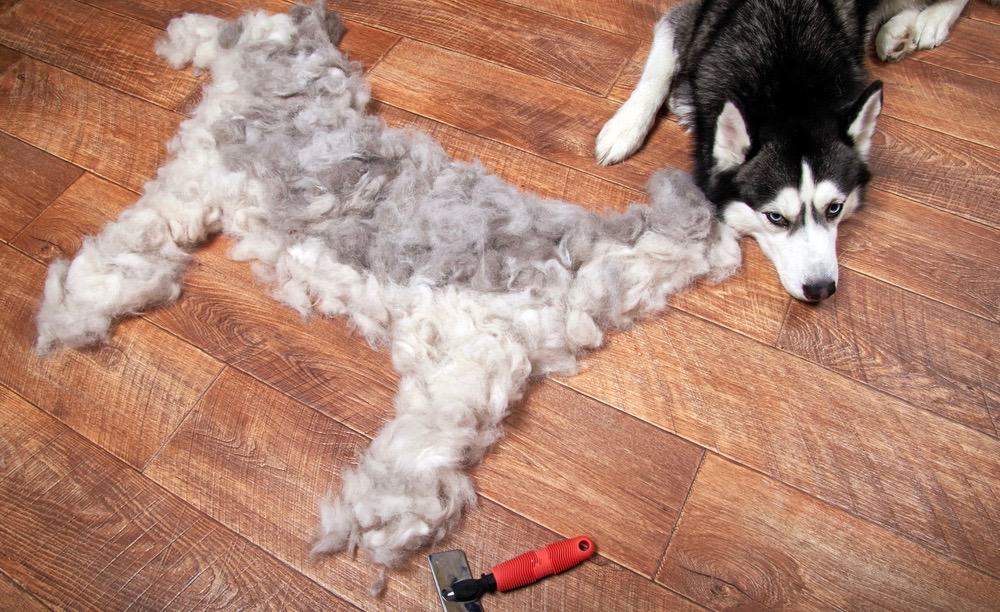
What Time Of The Year Do They Shed The Most
Usually, huskies shed their coats twice per year, in the spring and fall, but some huskies shed only once annually, usually in the spring. In very warm climates, such as the desert or tropics, some huskies may shed throughout the year.
Continuous shedding is rare, some members of this breed sometimes have difficulty acclimating to a climate-controlled lifestyle.
How Bad Is Husky Shedding To Deal With
In comparison to other dog breeds, Siberian Huskies are fairly prominent shedders.
It also helps that their fur is not as long as some breeds like the Bernese Mountain Dog, so it won’t be as bad. With proper grooming, you can reduce the effects of shedding.
How To Brush Your Husky At Home
Before you brush, you can also wipe his coat with a dry bath wipe to lift away mud and dirt and prevent skin irritation.
Many people dog outside or an enclosed area so that the fur does not get all over the house. Use a soft enough brush and run it through the entirety of his coat regularly.
How To Protect Your Furniture From Dog Hair
The best way to keep a dog’s hair away from your furniture is to not allow him to sit on it. However, many people want to spend time with their dogs on the furniture.
Try placing a covering over your furniture and only removing it when you are expecting visitors.
Final Words
Under no circumstances should you shave your Husky, or any other dog breed for that matter. A dog’s coat protects it from heat, cold, sunburn, insects, chemicals, etc.
Your dog’s fur is like what clothing does for humans. Think of what clothing and overalls protect you from.
You might be tempted to take some action in hot climates, but your Husky should never be shaved. Your dog may be panting in hot weather, but this is completely normal.

